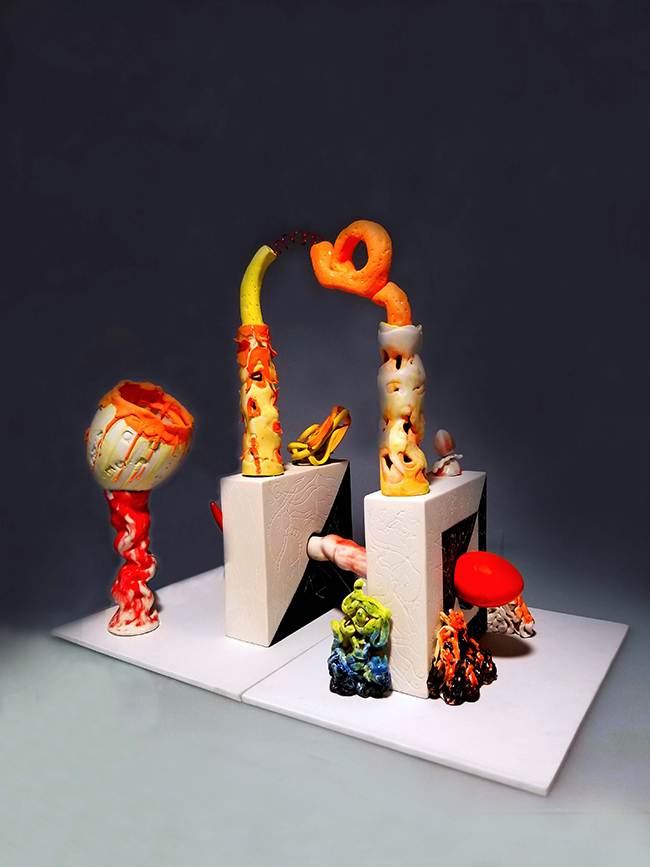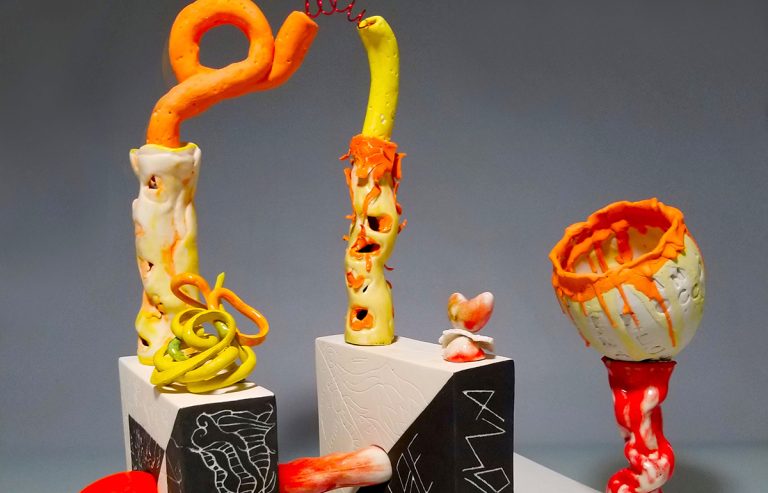Sylvia Nagy’s artistic journey stands at the intersection of industrial technology, ceramic design, and artistic expression. With an academic foundation in Silicet Industrial Technology and Art from the Moholy-Nagy University in Budapest, she has built a career that bridges the technical and the conceptual. Her time at the Parsons School of Design further cemented her expertise, where she not only taught but developed a specialized course on mold model making in plaster, sharing her deep understanding of ceramics with a new generation.

Her work has taken her around the world, shaped by residencies in Japan, China, Germany, the USA, and Hungary. Each stop has left an imprint, adding new dimensions to her creative approach. Nagy’s global perspective is evident in her work, which reflects both the fragility and strength of ceramics as a medium and as a metaphor for the human condition.
A member of the International Academy of Ceramics in Geneva, her art has been exhibited in museum collections in countries such as France, Spain, and Korea. Her dedication to ceramics is matched by her passion for dance, fashion, design trends, and photography, all of which feed into her artistic vision.

Nagy’s work, including her piece Love in Yellow and Red, mirrors the world’s fragility and complexity. She draws parallels between the physicality of ceramics and human experiences, pointing out how both are strong yet susceptible to breaking. The multicultural energy of New York, where she has spent considerable time, informs her creative process. To her, the city represents a concentrated blend of artistic and cultural diversity, a microcosm of the larger human experience.
Her current artistic explorations delve into cubes and organic forms, using them as tools to investigate the contradictions of life. This exploration is not just formal but deeply philosophical. For Nagy, the cube represents stability and structure, while organic forms symbolize fluidity and change. She creates works that contrast black-and-white simplicity with vibrant colors, such as yellow, to evoke the interplay of opposing forces, much like the yin-yang principle.
At the heart of Nagy’s work is her fascination with vibration and frequency. She sees life as a series of interconnected waves—whether in sound, light, or the electromagnetic spectrum. These vibrations, she believes, connect us to the universe’s energy. Her ceramic works reflect this belief, often featuring abstract forms that play with light and shadow, color, and texture to create visual dialogs.
In Love in Yellow and Red, Nagy uses a combination of cubes and an openwork ball to explore themes of duality and connection. Yellow, a recurring color in her work, symbolizes energy and optimism. For Nagy, color is more than a visual element; it is a frequency, a vibration that resonates on a deeper level. She sees her art as a way to channel this energy, creating pieces that invite viewers to pause and reflect.
Nagy’s ceramics are not just about aesthetics; they are about storytelling. She describes her work as a response to a world filled with uncertainty, fear, and imbalance. Immigration, insecurity, and global tensions are themes she often references, aiming to capture both the chaos and the hope inherent in life. The fragility of her ceramic forms echoes the vulnerability of the human experience, while their vibrant colors and intricate designs suggest resilience and the possibility of harmony.
Throughout her career, Nagy has shown a commitment to pushing boundaries, both in technique and concept. Whether exploring the relationship between structure and chaos or delving into the vibrational qualities of color and form, Nagy’s art speaks to the universal rhythms of life.
Her teaching and residencies have also played a significant role in her artistic growth. These experiences have allowed her to absorb and reflect on diverse cultural influences, enriching her perspective and expanding her creative toolkit. Nagy’s work reminds us that art, at its core, is a dialogue—a way to connect with others and with the world around us.
For Nagy, art is an expression of feelings and a visual language that transcends words. She believes there is always light in the tunnel, a reminder that even in the darkest times, creativity can provide hope and clarity. Her ceramics embody this philosophy, offering a blend of strength, fragility, and beauty that invites viewers to engage, reflect, and find their own connection to the work.
Sylvia Nagy’s journey continues to evolve, shaped by her experiences, surroundings, and the ever-changing world. Through her art, she invites us to see life as a series of interconnected vibrations, a dance of color, form, and energy that speaks to our shared humanity.

